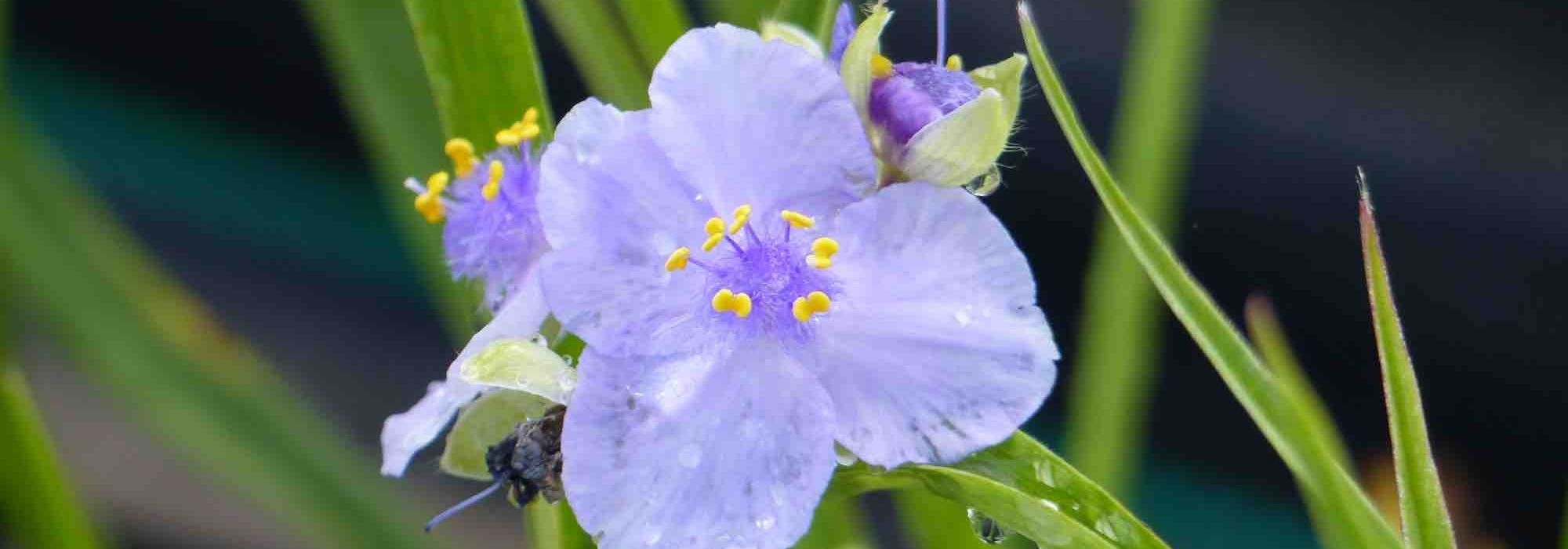
Tradescantia: the most beautiful varieties
Discover Virginia spiderwort
Contents
Tradescantia are a large family of perennials with nearly 70 species. You may know Tradescantia grown here as tender house or garden plants, also known as “Misery plants.”
Here, we focus on Tradescantia virginiana or Tradescantia andersoniana, commonly referred to as Virginia Spiderwort. These delicate little flowers last only a day, hence their name “Spiderwort,” but they continuously renew throughout the summer and in some varieties from spring to autumn.
They are easy perennials to grow, with a variety of flower and foliage colours and are more or less compact. Discover 7 varieties from our collection and adopt this charming perennial with exceptionally long flowering.
→ Our app Plantfit will help you tailor your plant choices to the characteristics of your garden!
Tradescantia ‘Perrine’s Pink’
Let’s start with a very simple variety: ‘Perrine’s Pink’ is a cultivar that differs from the typical species by its delicate pink colour. It is a pale pink slightly tinged with blue, with golden yellow stamens contrasting against these graceful petals. The flower is simple and flat with three well-rounded petals. The plant is quite compact, reaching a height of 40 cm with a relative spread of 55 cm. The foliage is a vibrant green, and flowering begins in June and lasts until August. Flowers of about 3 cm, the usual size for Tradescantias, bloom and renew each day.
Imagine it alongside perennials that enjoy cool soils, such as the Persicaria bistorta with its medium height and pink spikes, Veronicastrum virginicum, and the grass Calamagrostis.
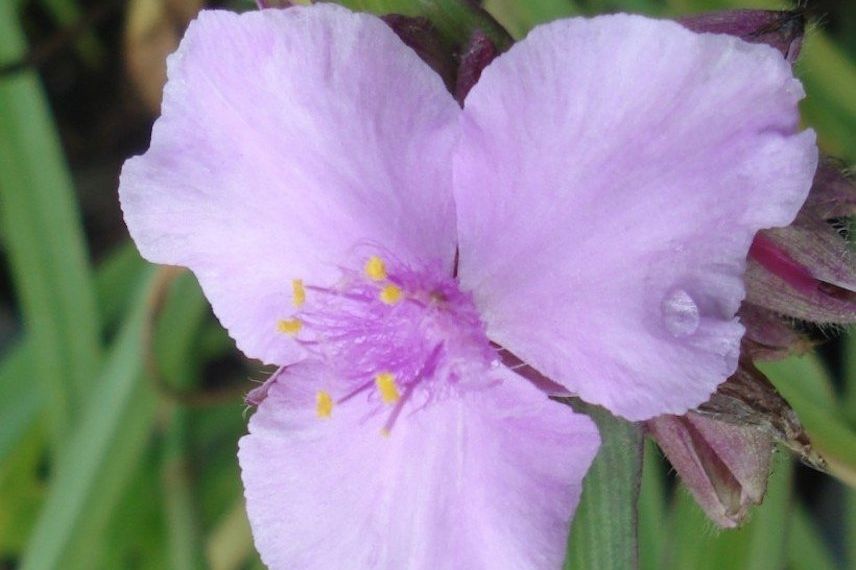
Tradescantia ‘Perrine’s Pink’
Tradescantia andersoniana ‘Osprey’
What a lovely variety the Tradescantia andersoniana ‘Osprey’ is! The flower, single and triangular in shape, has three flat, round petals. They are white, with a slight blue hue in the centre. The yellow anthers are borne by violet stamens on a deep blue centre. The plant spreads to 40 cm and reaches a height of 50 cm. It is vigorous and has an exceptionally long flowering period ! Indeed, ‘Osprey’ produces its first flowers in May and its last in October.
Plant it with a lovely blue Phlox, an Ophiopogon, a Lungwort, and a Campanula.

Tradescantia ‘Osprey’
Discover other Tradescantia - Spiderwort
View all →Available in 1 sizes
Available in 1 sizes
Available in 0 sizes
Available in 0 sizes
Available in 2 sizes
Available in 1 sizes
Available in 2 sizes
Available in 1 sizes
Available in 1 sizes
Available in 3 sizes
Tradescantia andersoniana ‘Blushing Bride’
Another variety with a very long flowering period, Tradescantia ‘Blushing Bride’ blooms from May to October. However, it has another beautiful asset: its foliage is variegated with pink. In fact, like many variegated Tradescantias grown as houseplants (fluminensis, zebrina, etc.), this one can also join your interior, provided it receives good light.
The foliage of ‘Blushing Bride’ is broad and triangular, with pink variegation appearing in spring at the base of the young leaves. The pink spots then turn white on the mature leaves, adding even more appeal. Its flowers, white with yellow stamens, bloom for 4 months. The mature plant reaches 50 cm in all directions. It is slightly less hardy than its counterparts, tolerating temperatures down to -10°C.
To enjoy its beautiful foliage without it getting lost in excessive vegetation, plan to either create a miniature bed or plant ‘Blushing Bride’ in a pot, alongside Tiarellas and small perennials with pale pink and white flowers, as well as small ornamental garlic bulbs, Alliums, or Tulbaghias.
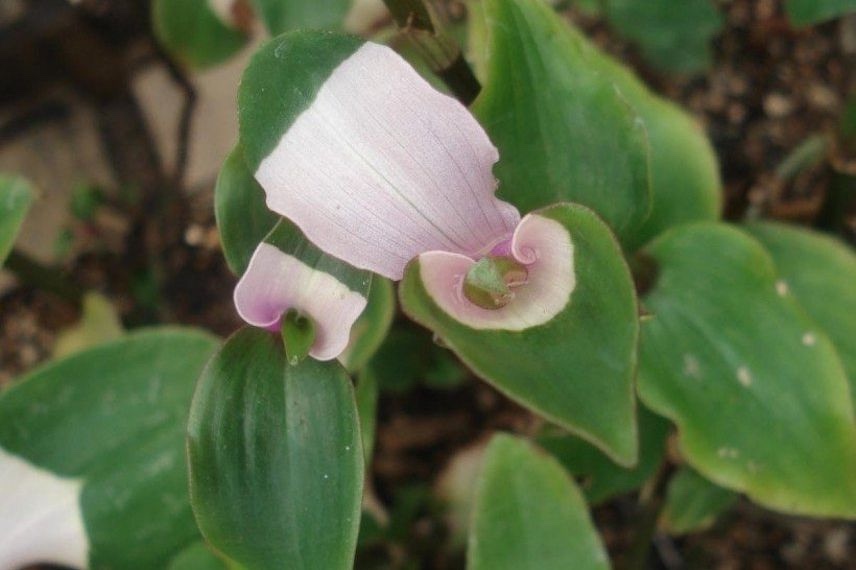
Tradescantia ‘Blushing Bride’
Read also
How to pair Virginia Tradescantia?Tradescantia andersoniana ‘Bilberry Ice’
The Tradescantia andersoniana ‘Bilberry Ice’ is an original cultivar. Its flower, quite large, features three flat white petals, heavily infused with mauve-pink from the centre and the midline of each petal. The centre is slightly violet, and the golden stamens shimmer on this lovely refined flower. The plant blooms from June to August, reaching a tuft of 50 cm in all directions.
Plant it in a mixed border with fresh soil alongside Lychnis, hardy geraniums, and sages such as Nemorosa or Pratensis.

Tradescantia ‘Bilberry Ice’
Tradescantia andersoniana ‘Sweet Kate’
This Virginia Spiderwort ‘Sweet Kate’ offers a striking contrast of complementary colours: golden yellow foliage and intense blue flowers. This very bright, rather compact variety, measuring 40 cm in all directions, blooms from June to August. Its flower, composed of three slightly dentate, dark blue-violet petals, features golden yellow stamens at the tips, echoing the colour of its ribbon-like foliage.
It will thrive in a semi-shaded position, illuminating and enhancing its colours. Plant it alongside Heucheras, Alchemillas, a yellow Spiraea japonica such as ‘Golden Princess’, or yellow-margined Hostas.

Tradescantia ‘Sweet Kate’
Tradescantia virginiana ‘Innocence’
Let’s quickly discuss Tradescantia ‘Innocence’ for its pure white. It is a variety that reaches 50 cm in all directions, blooming from June to August. A tiny hint of colour is still noticeable through its yellow stamens. The Tradescantias thrive well in partial shade, making such a white flower a stunning addition to brighten a shady corner.
Pair it with perennials that enjoy partial shade or tolerate it, such as Brunneras, ferns, columbines, and an Aster divaricatus.
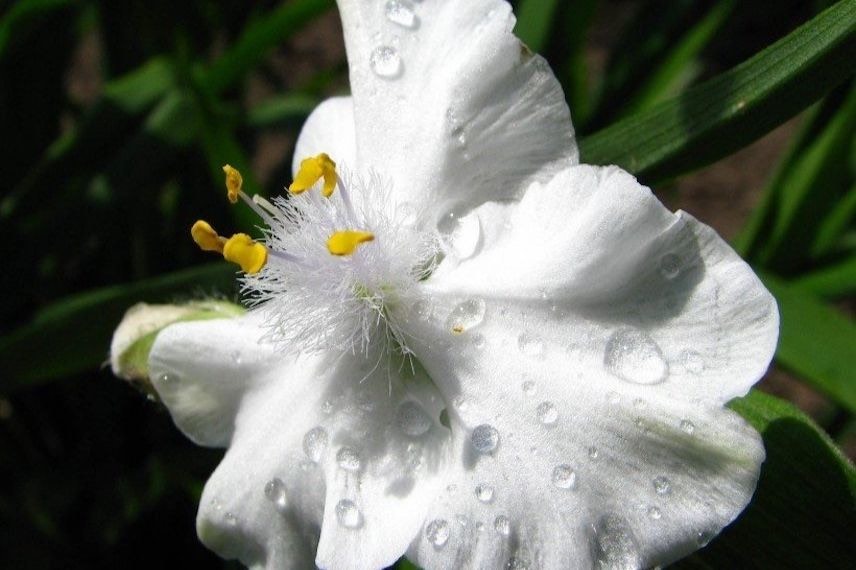
Tradescantia andersoniana ‘Innocence’
Tradescantia andersoniana ‘Little Doll’
Let’s finish with a charming and delicate one among the delicate, the variety ‘Little Doll’, which truly lives up to its name of little doll. It is very compact, measuring 25 to 30 cm in all directions. It maintains its beautiful and intact foliage throughout the season, while other varieties often suffer from damaged leaves. It blooms from June to August. Its petals are light lavender-blue, with a darker centre and delicately contrasting stamens, the same golden yellow as its companions.
Give it a spot at the edge of a flowerbed with Nepetas, Phlox, Oriental Poppies, and Verbenas.

Tradescantia ‘Little Doll’
- Subscribe!
- Contents

































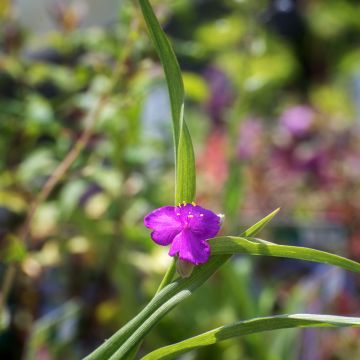
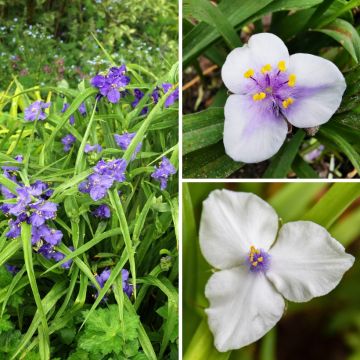
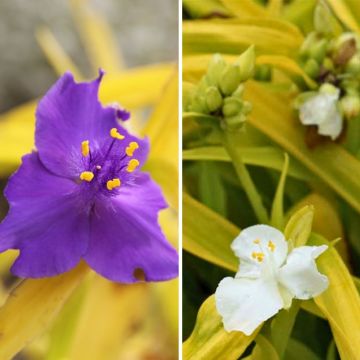
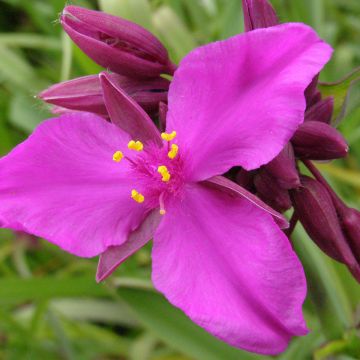

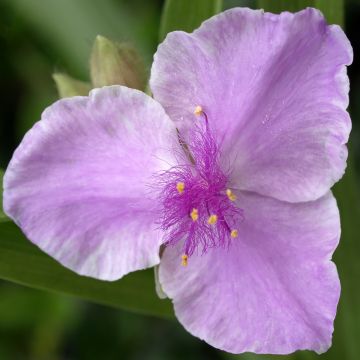
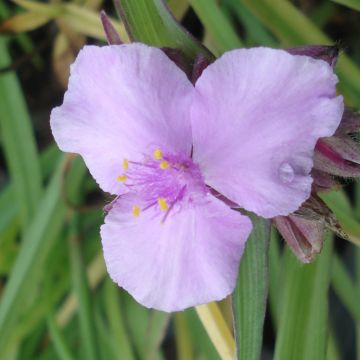
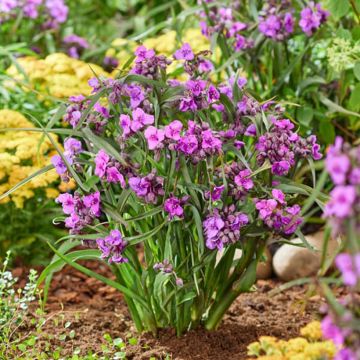
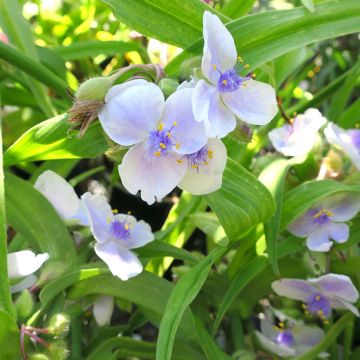
Comments